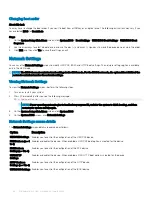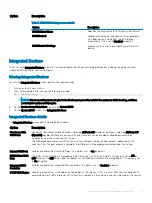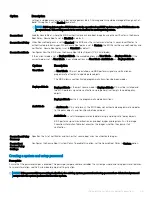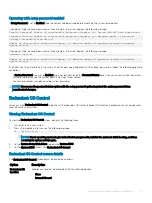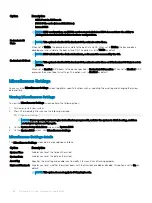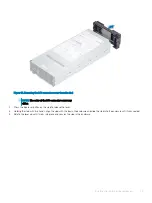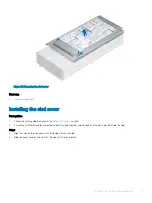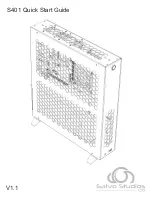
Option
Description
settings, and blocks access to all in-band management tools. All management should be managed through out-of-
band. This option is set to
Enabled
by default.
NOTE:
BIOS update requires HECI devices to be operational and DUP updates require IPMI interface to
be operational. This setting needs to be set to Enabled to avoid updating errors.
Secure Boot
Enables Secure Boot, where the BIOS authenticates each pre-boot image by using the certificates in the Secure
Boot Policy. Secure Boot is set to
Disabled
by default.
Secure Boot Policy
When Secure Boot policy is set to
Standard
, the BIOS uses the system manufacturer’s key and certificates to
authenticate pre-boot images. When Secure Boot policy is set to
Custom
, the BIOS uses the user-defined key and
certificates. Secure Boot policy is set to
Standard
by default.
Secure Boot Mode
Configures how the BIOS uses the Secure Boot Policy Objects (PK, KEK, db, dbx).
If the current mode is set to
Deployed Mode
, the available options are
User Mode
and
Deployed Mode
. If the
current mode is set to
User Mode
, the available options are
User Mode
,
Audit Mode
, and
Deployed Mode
.
Options
Description
User Mode
In
User Mode
, PK must be installed, and BIOS performs signature verification on
programmatic attempts to update policy objects.
The BIOS allows unauthenticated programmatic transitions between modes.
Deployed Mode
Deployed Mode
is the most secure mode. In
Deployed Mode
, PK must be installed and
the BIOS performs signature verification on programmatic attempts to update policy
objects.
Deployed Mode
restricts the programmatic mode transitions.
Audit Mode
In
Audit mode
, PK is not present. The BIOS does not authenticate programmatic updates
to the policy objects, and transitions between modes.
Audit Mode
is useful for programmatically determining a working set of policy objects.
BIOS performs signature verification on pre-boot images and logs results in the image
Execution Information Table, but executes the images whether they pass or fail
verification.
Secure Boot Policy
Summary
Specifies the list of certificates and hashes that secure boot uses to authenticate images.
Secure Boot
Custom Policy
Settings
Configures the Secure Boot Custom Policy. To enable this option, set the Secure Boot Policy to
Custom
option.
Creating a system and setup password
Prerequisite
Ensure that the password jumper is enabled. The password jumper enables or disables the system password and setup password features.
For more information, see the System board jumper settings section.
NOTE:
If the password jumper setting is disabled, the existing system password and setup password are deleted and you need
not provide the system password to boot the system.
Pre-operating system management applications
35








